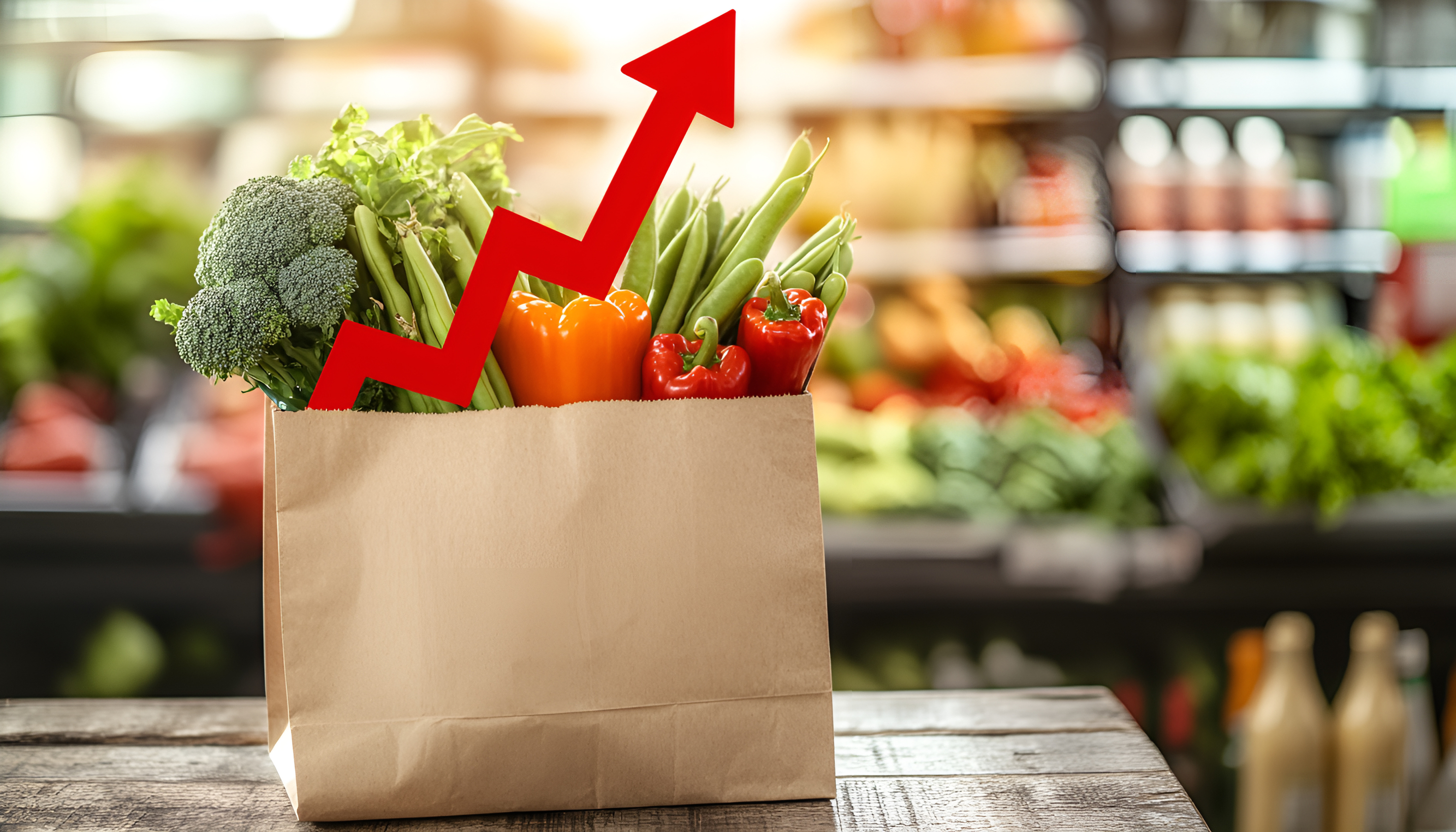The Numbers Behind Rising Grocery Prices
Written by Arbitrage • 2025-08-25 00:00:00

According to new data from last week, United States inflation on the wholesale level picked up steam last month, with prices rising by the fastest monthly pace since June 2022. Additionally, in July 2025, the Producer Price Index (PPI) for fresh and dry vegetables surged by a staggering 38.9% compared to June. This was the largest summer increase since 1947. "The large spike in PPI shows inflation is coursing through the economy, even if it hasn't been felt by consumers yet," said Chris Zaccarelli, Chief Investment Officer at Northlight Asset Management. Dr. Brian Bethune, an economist, author, and professor at Boston College, agreed, saying that the potential consumer price inflationary impact could be underestimated at the moment.
Experts cite tariffs as one reason for the higher grocery prices. The U.S. imports more than a third of its fresh vegetables, according to U.S. Department of Agriculture (USDA) data released in January. Dr. David Ortega, a food economist at Michigan State University, told Marketplace, "People's budgets are strained. Everybody sees the price of food," especially on common vegetable imports like "tomatoes, asparagus, cauliflower, cucumbers." Importers of perishable foods like vegetables have faced a challenge because they cannot stockpile products ahead of tariffs, since the fresh produce would rot. By contrast, some toy or apparel retailers have been filling warehouses with products imported at pre-tariff rates.
Dr. Robert Lynch, an economics professor and co-author of a recent report on immigrant workers in the U.S., noted that employment of agriculture workers dropped 6.5% between March and July of this year, after increasing during the same periods for the last two years. That could be a result of immigrant workers who were deported, fewer new immigrants being allowed into the country, and those who are here but fear government raids if they show up for work.
The Associated Press-NORC Center for Public Affairs Research reported a poll released last week that more than 80% of American adults cite the cost of groceries as a source of stress. In addition to vegetables, the recent CPI showed a significant increase in cost for food items ranging from eggs (16.4%) and coffee (14.5%) to uncooked ground beef (11.5%). Some Americans are now starting to change their shopping behavior as they grow more concerned about the economy. "Customers continue to spend cautiously in an uncertain economic environment," Kroger interim CEO Ron Sargent said in June. "Both in high- and low-income levels, they're navigating a significant uncertainty." Here are some tips to help save money at the grocery store:
- Make a list: Journalist and food marketing expert Phil Lempert noted that "40% of all of our food is wasted in this country" and that Americans should be wary about overbuying and overcooking. He recommends, "take inventory before you go shopping."
- Buy on sale, freeze for later: Sales on items such as meat and other perishable foods won't last forever, so freezing this type of fresh food can be a great way to take advantage of a sale. Look for sales on more expensive items, like steak, and then freezing what you can't cook that week.
- Look for digital coupons: Grocery stores often offer special deals for their app users to cultivate customer loyalty. The Food Industry Association found that 54% of online shoppers have used a store app to order groceries.
- Buy store brands: One small grocer said to steer away from the national brands. Instead, you can save big by buying store brands, or private labels, which are usually cheaper. Retail giants Walmart and Kroger both said in their latest earning reports that consumer demand for these cost-saving store labels is driving sales, even amid high grocery prices and consumer spending anxiety.
- Do-it-yourself: Pre-cut fruit and vegetables can be an appetizing and convenient choice, but they often cost more. Leonard suggested buying the whole fruit or vegetable and cutting it yourself to save money. Fruits and vegetables have seen only modest price increases so far this year. Fresh vegetables in July were slightly less expensive than last year, and fresh fruits are up only 1.3%, according to the BLS. For comparison, meat is 5.8% more expensive than one year ago.
- Adjust meal strategies: Cook in batches, freeze meals, or embrace one-sheet recipes to save on energy and reduce waste. Stretch expensive ingredients across multiple meals (e.g., mix ground beef with beans for tacos). Don't forget about leftovers: they make a great lunch the next day!
Consumers are feeling the grocery pressure: according to USDA data, as of July 2025, the PPI for all foods stands about 37% above February 2020 levels. Phil Kafarakis, president of the IFMA The Food Away from Home Association, told NBC that combining tariffs with President Trump's ongoing deportations have exacerbated the issue of fresh produce costs. Some Americans are changing what they buy, while others are holding steady for the time being. The good news is that you have agency. Strategic shopping, cooking at home, and staying informed can help you navigate this inflationary period without giving up flavor or your financial wellbeing.